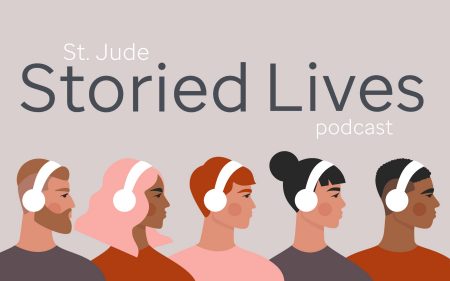
These women survived bone cancer and became trailblazers. I will believe my daughter will, too.

When amputation became part of her daughter's cancer treatment, Jamie felt it as a loss. Then her perspective was changed completely.
From the time I was a little girl, my parents taught me there was nothing I couldn’t do. Sometimes, I found that doing what I wanted meant I was going to be a trailblazer.
I was the only girl on my high school golf team, and later, in my career in the golf business, I was often the odd one out in the boardroom, too. When we were blessed to have a daughter, I knew I would raise her with the same no-limits attitude my parents had given me.
We named her Bridget, which means “strong.” At the time, we had no idea how fitting that would be.
Flash forward six years. Bridget was kicked at soccer practice, and the pain was so intense, we took her for x-rays. It turns out it was a lucky accident, because we discovered Bridget had cancer in the bone of her right leg. Sitting in a surgeon’s office, we learned that Bridget would, if all went well, trade her right leg for her life.
Her life: The one in which I could only imagine her having the ten toes I counted the day she was born.
Her surgeon assured us that her prosthesis would allow her to live without physical limitations, and I heard him, but I could not envision that. After 10 more weeks of chemotherapy, on April 23, my daughter would lose part of her body. I wanted her to be healthy, but I also wanted her to be whole.
Knowing that amputation was a possibility, we'd already been looking for encouragement. The same day we learned Bridget would undergo amputation, she got a video call from Brenna Huckaby. Brenna, like Bridget, is an athlete, an amputee and a survivor of osteosarcoma. She’s also a two-time Paralympic gold medalist and a model. She did more than tell this tearful, fearful little girl that she would have no limits — she was able to stand as proof. For all of us.
The night before Bridget’s amputation, we raised a sparkling cider toast to taking the cancer out of her body. We chose to look at that date as when she would be healed. It may have felt like a loss, but it was a win.
Our family is very competitive, almost to a fault. My husband and I were college athletes, and Bridget’s older brother is headed that way as well. Winning is something that we maybe put a little too much emphasis on. The other day Bridget said to me, “If you can train to win, you can teach yourself to never give up. I may not always win everything, but I never give up.”
She’s been knocked down many times and had many complications from treatment — a blood clot in her heart, permanent hearing loss — but when she said that, I was like, oh my gosh, you’re so right. Training yourself to never give up is better than winning. It is winning, really.
When we were at St. Jude for scans recently, I told that same doctor, “When I sat in this office three years ago, and you told me Bridget was going to be able to play sports and run and jump, I didn’t believe a word you said. But you were right.”
Bridget is on a basketball team, she does therapeutic horseback riding, she plays golf, she’s on a competitive swim team, she does intensive physical therapy three times a week, and she runs faster than I do up the stairs. At 9 years old, she’s doing everything I questioned was possible. And more.
And if you told her the sky was the limit, you’d still be stopping short.
Three years to the month after Brenna proved to Bridget that amputees can be Olympians, St. Jude physician assistant Hayley Arceneaux is showing her childhood cancer survivors can go to space.
A survivor of the same disease that Bridget had — osteosarcoma — Hayley is going into orbit as a crew member with the Inspiration4 mission, part of an effort to raise $200 million to help St. Jude and children here on Earth like Bridget.
For her, I want these amazing women to serve as an example. They are trailblazers, women who embody the wisdom my daughter has learned so young: Possibility abounds if you learn to never give up.




